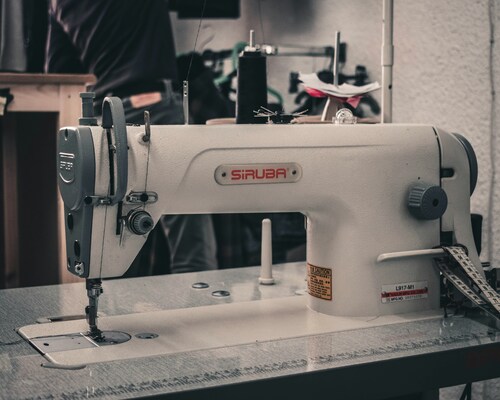automotive upholstery. These powerful machines are designed to handle high-volume sewing tasks efficiently and reliably.
Understanding the key parts of industrial sewing machines, like needle and needle bars, feed dogs and bobbin case, is essential for anyone working in the textile or manufacturing sectors. This comprehensive guide will explore the fundamental components that make up these workhorse machines and how they contribute to their functionality.
1. Needle and Needle Bar
At the heart of every sewing machine is the needle and needle bar. The needle is responsible for piercing the fabric and creating stitches, while the needle bar holds the needle in place and controls its movement. Industrial sewing machines are equipped with a variety of needle types and sizes to accommodate different fabrics and sewing applications. Needles may be straight or curved, depending on the machine’s design and intended use. Proper needle selection is crucial for achieving optimal stitch quality and preventing fabric damage or breakage.
2. Feed Dogs
Feed dogs have metal teeth-like mechanisms located beneath the needle plate. Their primary function is to grip the fabric and move it through the machine in a consistent manner. Industrial sewing machines feature feed dogs with various configurations, including regular, differential, and compound feed systems. Differential feed dogs are particularly useful for sewing stretchy or slippery fabrics, as they can adjust the feed rate to prevent puckering or distortion. Properly adjusted feed dogs ensure smooth and even fabric movement, resulting in precise stitching and professional-quality seams.
3. Bobbin Case and Bobbin
The bobbin case and bobbin are integral components of the sewing machine’s lower thread system. The bobbin is a small spool that holds the lower thread, while the bobbin case houses the bobbin and regulates its tension. Together, they work in tandem with the upper thread to form secure and balanced stitches. Industrial sewing machines may utilise different types of bobbin systems, including drop-in, rotary, and vertical-axis bobbins. Each system has its unique advantages and is suited to specific sewing tasks. Proper bobbin tension adjustment is critical for achieving uniform stitch formation and preventing thread nesting or bunching underneath the fabric.
4. Tension Assembly
The tension assembly is responsible for controlling the tension of the sewing threads as they pass through the machine. It consists of tension discs, springs, and tension dials or knobs that allow operators to adjust the thread tension as per the fabric and stitching requirements. Industrial sewing machines typically have separate tension mechanisms for the upper and lower threads, allowing for precise tension adjustment for various sewing applications. Proper tension settings ensure balanced stitches with no loose loops or thread breaks, resulting in durable and aesthetically pleasing seams.
5. Presser Foot and Presser Foot Lever
The presser foot is a metal attachment that holds the fabric flat against the sewing machine’s throat plate during stitching. It helps prevent fabric shifting and ensures smooth and consistent feed. Industrial sewing machines are equipped with a variety of presser foot styles, including standard, zipper, and walking feet, each designed for specific sewing tasks. The presser foot lever controls the pressure exerted by the presser foot on the fabric and can be adjusted according to different fabric thicknesses and types. Proper presser foot pressure adjustment is essential for achieving even stitches and preventing fabric distortion or puckering.
Understanding the key parts of industrial sewing machines is essential for achieving optimal performance and stitch quality. From needles and feed dogs to bobbin case and tension assemblies, each component plays a critical role in the sewing process. By familiarising yourself with these essential parts and their functions, you can operate industrial sewing machines with confidence and precision. Whether you’re a seasoned professional or just starting in the textile industry, mastering the intricacies of industrial sewing machine components will empower you to tackle any sewing project with skill and efficiency.
